You are currently browsing the monthly archive for May 2009.
You can see the precursor to this text here (pt. 1, learning to listen).
We are instructed to choose a material we have a kinship with or would like to further explore in this class. I know I would like to explore the properties of textiles, and I have two in mind: one is silk organza, a light, fine woven fabric with little drape and a fair amount of body (I have some in black and in white); the second is an unbleached cotton jersey – standard knit, soft, light and drapey with a one-way stretch. Both of these fabrics are made of natural fibres and each has its own inherent qualities.
I begin with the black silk organza. It is stiff, strong and light. It is semi-translucent, and has a visible warp and weft. It has a small amount of give on the bias, but almost none along the grain. I can easily pry fibres from the raw edges of the fabric, each thread long and even.
The second fabric is very different. It drapes; caresses and folds over the surfaces it touches; it stretches and flows with ease. It’s colour is flaxen, off-white with flecks of brown and grey. Using the crochet hook, I begin to unloop individual stitches from the raw edge of the fabric. I tug gently at the column of stitches, which form ladders in the fabric, perpendicular to the raw edge. Adjacent stitches merge into one gap. Entire rows become hanging threads, crinkled from their previous formation. Making ladders in the fabric change the tension, the flat plane of the fabric that existed now has more volume, more surface, extending beyond it’s previous borders. Further work makes an intricate, delicate kind of lacework. The drape becomes cascading shreds and threads.
There is something missing from the equation. There is a kind of emptiness, the strength, the fragility, and lightness of the material is undefined. The stretch and tension is now latent. I take some glass beads, and bind them into the fabric, one by one, creating a huddled mass, weighty and finite. The material is pulled taut around the beads, parallel lines in the ladders warping around the beads, creating rhythmic concentric patterns. The remaining fabric trails behind, given a new quality purely by contrast.
- unravelled fabric
- unravelled fabric
- Glass beads wrapped in fabric
- Glass beads wrapped in fabric
- Glass beads wrapped in fabric
- “-every shape is (seems to be) possible from one piece of fabric; it looks really cool!”
- “it is very poetic. it becomes light and the details inside make it strong.”
- “I really like the balls in the cloth/fabric. I don’t know if I’m allowed to say this but maybe more layers of fabric.”
- “hiding something but still kinda seeable. why u put round things in it?”
- “I don’t know exactly… Is it more beautiful with black or white balls/bubbles.”
- “I like your pieces, especially the ones with the things in it! But it might be good to use more expressive forms which are lighter.”
- “Patterns and rhythms through the destruction of the material. How does the 2nd material influence the patterns? What else could you use?”
- “Nice/sensitive colour; the two materials are combined well.”
- “They’re really cool, I like them – now it’s probably good to think about what forms you want to put behind the fabric.”
- “why just this material (the one that is wrapped?)? –> What about more organic material? (I’m thinking of beach stones and so on)”
- “I like it when the pearls are so heavy they stand in contrast to the light material.”
- Wood work light
- Wood work light
- Wood work light
- Second hand plate
- Second hand plate
- Second hand plate
- Custom made Chair
- Custom made Chair
- Custom made Chair
I stumbled across this Dezeen article on Karen Ryan last week, and I can’t get her work out of my head.
Ryan uses ‘used’ objects to create amazing graphic-inspired objects which make a strong social comment about consumerism and the obsolescence of products.
She manages to find a place as a product designer amidst a sea of mass-over-production. Very poetic and thought-provoking, whilst being aesthetically very edgy and fresh.
Her personal website has a link to her Flickr photostream, showing objects and process from previous collections.
This course is taught by Contemporary maker Prof. Elisabeth Holder.
It involves the exploration of materials via an approach which deconstructs a traditional methods. Instead of engaging with a material with the intent of controlling the form which it will finally take, we are encouraged to engage in a dialogue with the material, Allowing the material to determine it’s own form, through it’s own inherent qualities.
First class: Elisabeth enters the room and places 20-odd A4 kraft envelopes on the desk, each numbered. Then she proceeds to pass around a hat full of folded papers, also numbered. Each of us draws a number, and takes the corresponding envelope. Some envelopes are light, flat, empty looking, others have strange protrusions creasing their surface.
My envelope, number 18, is relatively flat and slightly weighty – a bit nondescript.
When all the recipients claim their envelopes, (there are six or so unclaimed. Excess secrets.) we all begin to tear them open. It is like christmas, preparing myself to react adequately, regardless of my impression.
On first impressions:
– Tasteless, odourless, no distinct sound on manipulation (except throwing it against a hard surface)
– amorphous, reformable
– opaque, except when in very, very thin layers, becomes semi-translucent.- oily residue
– leaves traces of itself behind on skin, paper
– Also holds traces of its surrounding.
– affected by temperature, heat makes it more pliable, cold more stiff
Now, we are instructed to remember and consider our first experiences of the material.
* * *
I am young, perhaps six or seven years of age. I am in a cubby house made of timber in my back yard, built by my dad. I spent hours in that place, drawing, painting, making potions and perfumes and tea and toys and figurines. Tiny imaginary machines, homes for creatures and toys.
I have a box of coloured plasticine, eight colours or maybe more. I am always careful to keep the colours separate – only ever pressing different colour lightly together, so as it return them to their separate wads of colour when I was finished. it only takes one mistake, for the piece to be forever changed. It wasn’t as though the colours mixed, like my paints did, but rather swirled into an impossible chaos of multiple colours.
It was summer, and I became distracted by the flowers and sun and insects, so I abandoned my workshop for a few weeks to the heady rhythms of the outside world. Returning to my bench, I found my box of plasticine, transformed by the sun’s glass-house effect on the plastic container from neat wads of colour to one great colourful mass, cast to the interior shape of the box.
I was disappointed, but also mesmerised by this incidental artwork – I stuck a heart-shaped piece of soap in the centre and kept it in my bedroom, in its box, for years. I never touched it again.
* * *
Next, we are to take the material, and consider what we might like to do with it. Think about the form we want it to take. I want to see how fine I can make it, stretch it out into one long, striated ribbon, fold it back onto itself, so the light filters through the surface, finding places to hide inside the curves.
And then, we are instructed to make it.
I try stretching the plasticine out – it is surprisingly unpredictable, highly elastic, but not uniform. It tears and ripples. It is at first kind of disappointing, because I know immediately I won’t be able to do what I wanted. Or at least, the material doesn’t want to be controlled as such. So I resolve to let go of my vision and let the material decide on a form. I begin to gently stretch and tear pieces of the material away from the lump, prying it between my fingers. As it gets thin, it warms and changes immediately under the heat of my fingertips. The torn pieces are very fine around the edges, rippled and glassine, like a carnation petal or internal issue. I start placing pieces onto the table surface, layering them, letting them curve and gently bend, finding their own forms. Even after I place them, the pieces continue to change and fall over time, slowly evolving.
The form I make is incredibly voluminous and intricate, like seaweed or some organic material. There is no symmetry or geometry, but there are forces at work – the piece is not static, but rather in a constant, slow flux. Collecting materials from the air around it. Not resisting heat or pressure or time, but gently accepting it.It can never be returned to its original state. Or perhaps, it’s original state doesn’t matter. It is flux, embodied.
I find myself attributing a kind of poeticism to the material, and feeling a kind of kinship. Like it is teaching me something about experience and acceptance.
After reflecting on our objects, we have a mini exhibition of our explorations. Everyone is given a dozen or so small strips of paper. We are to make a small evaluative statement about everyone else’s works – anonymous, placing the paper face-down next to the work. I have included them below.
- raw material
- first dialogue: raw material, exploratory form and traces.
- exploratory form
- exploratory form
- exploratory form
- “Compressed and tight to loose, but not light.”
- “The clay wants to be in a stabile form. You made it very fragile and thin.”
- “forever changing…”
- “very organic form/object, even if it is artificial material. are there any hints on your fingertips resulting from your work on the material?”
- “I don’t know what I would do with it but I think it wants to be formed and reused.”
- “strange colour for this material, reminds of…”
- “soft”
- “only one piece can be many pieces and look very different; on the one hand thick and on the other hand very thin and kind of vulnerable.”
- “a different colour would be nicer?!”
- “not form-taking, but form-making”
- “kindergarten material somehow it is to touch and bring it to another form”


















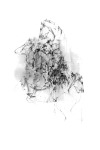


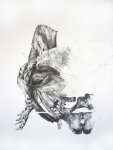

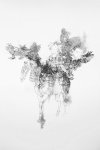


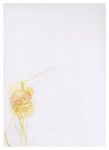



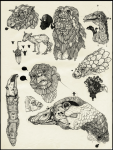












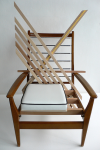
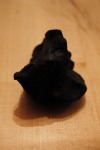



























Recent Comments